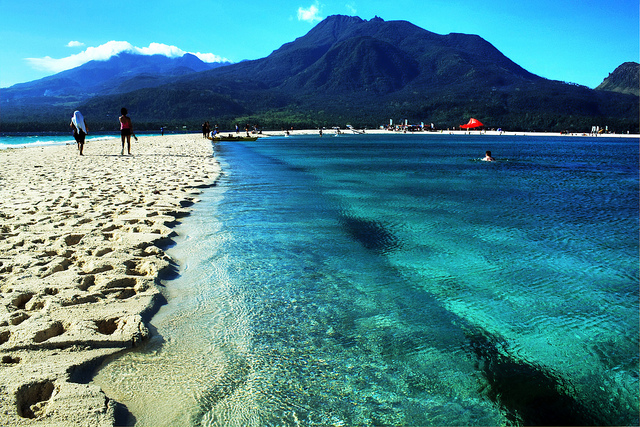Traveling enriches your perspectives, and literally changes how you see the world. Up close, these landmarks may not altogether look dramatic, but try to see them from where the eagles stand and you will instantly be transported to a different world and a different space-time.
Below are some of the most magnificent and intriguing landmarks that have become more popular with the advent of Google Earth.
The Grand Prismatic Spring in Yellowstone National Park
(Photo by Sam Beebe)
Beneath the Yellowstone National Park is a supervolcano that created the famous features of the park: the geyser, Old Faithful; the columnar basalt near Tower Falls; and the largest hot spring in the United States, the Grand Prismatic Spring. This “boiling lake” is 50 meters deep and its vivid colors come from heat-loving bacteria that live on the mineral-rich water of the spring.
The Great Blue Hole, Belize
Considered by some of the world’ top divers to be an astounding dive site of peerless quality, the Great Blue Hole of Belize is almost a perfectly circular blue hole 1,000 feet across and 400 feet deep. The name derives from the contrasting color of deep blue of the hole and the lighter blue of the surrounding shallow water. Below, the Great Blue Hole is an underwater cavern filled with stalagmites and stalactites which get more intricate as the diver goes deeper.
Meteor Crater, Arizona
From high in the sky, Meteor Crater appears featureless, save for what looks like a really big hole in the ground. Getting up and down the crater, however, entails serious hike which suggests the crater’s massive depth (570 feet) and size (4,000 feet across). A must-see for space lovers, Meteor Crater was where a 50-meter nickel-iron meteorite struck Arizona 50,000 years ago.
Heart-Shaped Islands
When Mother Nature wants to get frivolous, she conjures human-recognizable shapes out of underwater volcanic eruptions or tectonic plates drifting apart. She can also be hopelessly romantic. Several heart-shaped islands can be found scattered all over the globe: an island off the coast of Turkey; an idyllic Fijian island called Tavarua; a heart-shaped coral reef in Australia’s Great Barrier Reef; and the recently discovered uncannily heart-shaped Galesnjak island off the coast of Croatia.
Nazca Lines, Peru
The Nazca people of southern Peru flourished sometime between 100 BCE to 800 CE. They are famously known for their geoglyphs that depicted various characters in their day-to-day life. A UNESCO World Heritage Site, the Nazca Lines – which continue to baffle archaeologists as to their real purpose – have been preserved over time due to the region’s dry climate.



